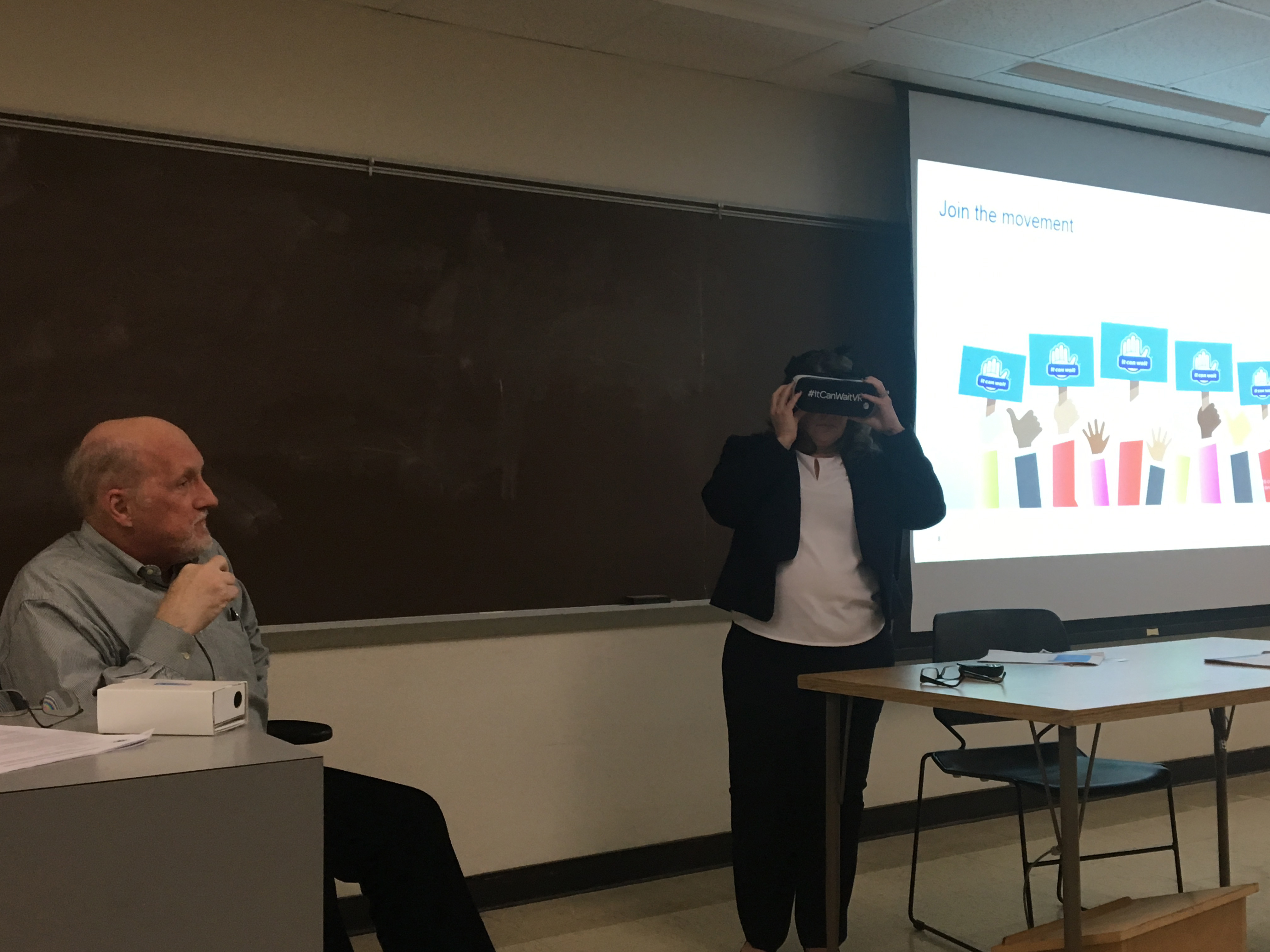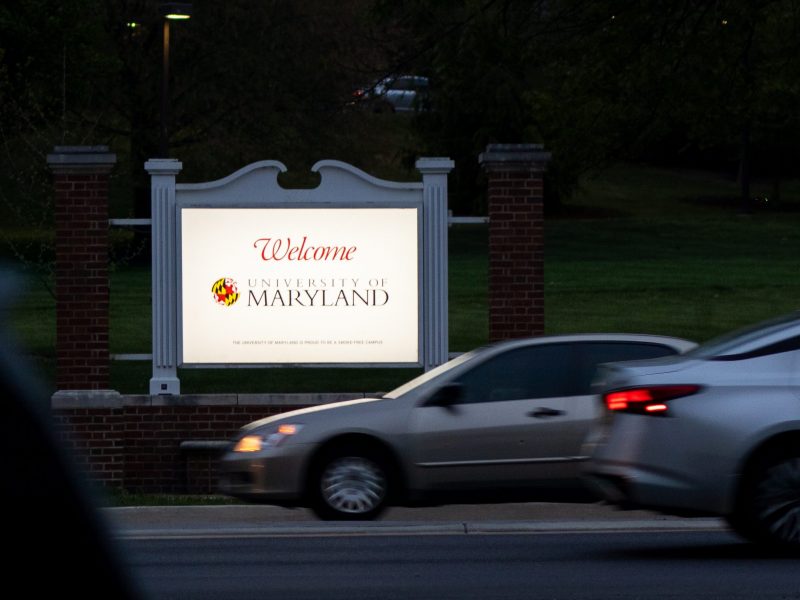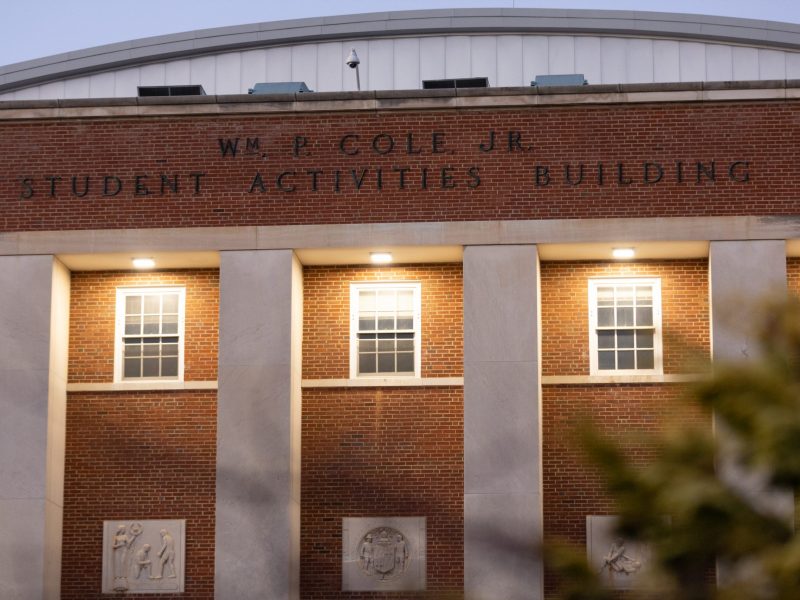When 19 University of Maryland students in a class about traffic safety issues were asked to raise their hands if they had ever texted someone while driving, nearly everyone did.
Dawn Couch, senior public relations manager at AT&T, saw this poll firsthand when she visited the class — called HLTH374: Drugged, Drowsy and Distracted Driving: Traffic Safety Issues for the New Millennium — on Feb. 13. The course was first offered last spring by the public health school to address distracted driving.
“You can apply a lot of social psychological principles to traffic safety,” said Kenneth H. Beck, the behavioral and community health professor teaching the class. “It’s such a social behavior. You don’t drive the roads alone, we drive with other people. There’s that mutual interdependence with whatever the drivers are doing that I find kind of interesting.”
[Read more: UMPD officers ticket in statewide effort to stifle distracted driving]
AT&T hosts community and educational events in the area promoting its “It Can Wait” campaign, which discourages texting while driving. Couch learned about the class through the public health school’s behavioral and community health coordinator, Tracy Kennedy, whose husband works for AT&T. Couch is one in a series of presenters on impaired driving that will address the class this semester.
According to AT&T research, about 49 percent of people have texted or used social media while driving, and 4 in 10 use social networks while driving, resulting in 200,000 distracted driving accidents each year. To augment this point, Couch’s presentation included a 3-D virtual reality simulation delivered through Samsung Gear VR, allowing participants to experience the consequences of glancing at a phone while driving. Students had the option to download the DriveMode phone application and use Google Cardboard to experience the simulation.
“I noticed a few people here, once the impact of the crash [occurred], I saw a few people jump,” Couch said. “That’s going to impact you more than a billboard you see on the side of the road.”
The university developed the course in response to an initiative Barbara Curbow, chairwoman of the behavioral and community health department, put out to the department’s faculty last year promoting innovative and relevant courses that could appeal to students, Beck said. This class involves numerous presentations as well as a project where students conduct their own original research.
“[Distracted driving] and drowsy driving are going to be emerging issues, the new form of impaired driving,” Beck said. “It’s something that we need to look at publicly, and get people engaged like they got engaged with drinking and driving.”
Couch also presented advertisements for the “It Can Wait” campaign, which tap into behavioral economics in an attempt to make the audience understand why people they make the choices they do on the road.
[A $12.5 million program aims to prevent drunk and distracted driving in Maryland]
“I have family members that text while they drive and I’m usually with them,” said Marianna Molina, a junior community health major in the class. “Having seen that now, I definitely feel called to intervene now. It’s definitely really scary to think about losing someone because of distracted driving.”
Couch said spreading and sharing this message can help to save lives.
“Tell your friends, take the pledge,” Couch said. “My hope is that this time next year, when I come back with the statistics, that those numbers have gone down.”



